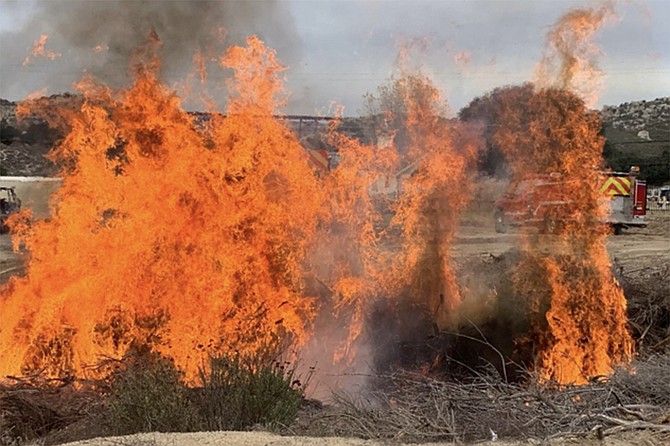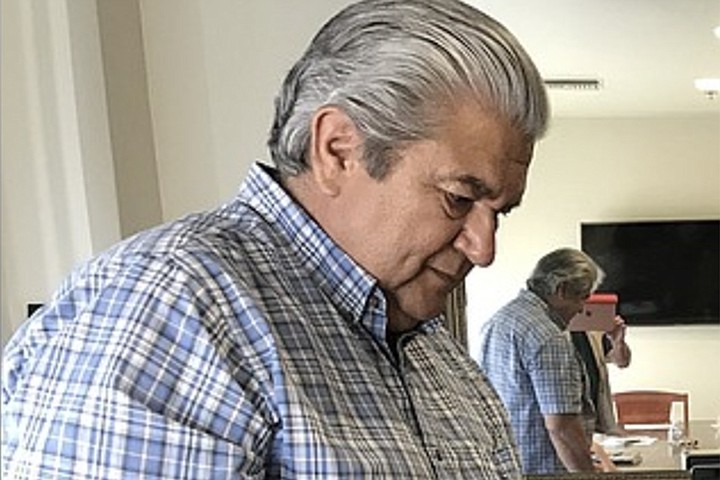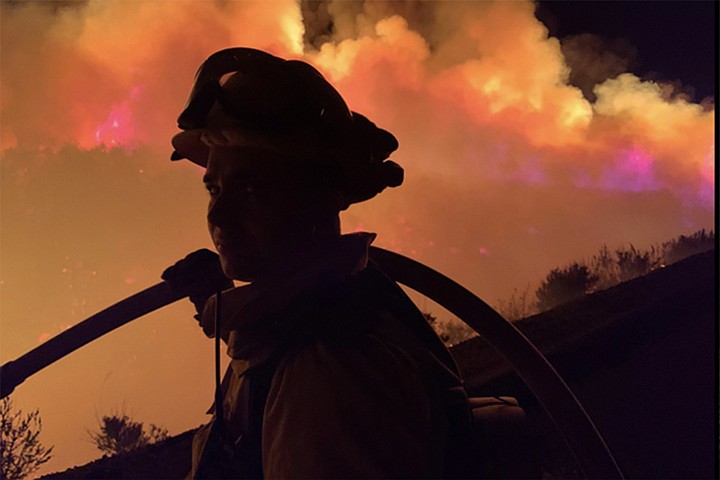 Facebook
Facebook
 X
X
 Instagram
Instagram
 TikTok
TikTok
 Youtube
Youtube

Have we been fighting wildfires the wrong way?
Because there’s a new idea spreading like, well, wildfire: that California’s native Americans had it right, and the rest of us have had it wrong. For the last century, at least. When state and federal authorities took over management of California’s wild lands, our attitude towards fire brought a subtle but vital change: where fire had been an ally in the fight for fertility, now, under the leaders of western settlers, fire meant fear, not a rejuvenator of life. The Forest Service saw fire as purely a destructive force. So no more annual mini-burns across the state. No more letting Native Americans manage the wild lands through regular, small burns. For the last century, the Forest Service policy has been fire suppression. Result: wildly overgrown undergrowth, bigger, more destructive wildfires. And with the way San Diego settlers have scattered throughout the back country, county and tribal fire services are over-stretched when it comes to saving people and property.

But up north, in places like Mammoth Lakes, new experiments are happening. “They are trying to revive the old ways,” says San Diego’s Campo Reservation Tribal leader Mike Connolly Miskwish. “The state is starting to ask us Native Americans how we did it, how come our way worked.”
Indeed, the state and federal authorities have recently been asking tribes to show how they used to set small fires to deprive large fires of their undergrowth fuel. Demonstration burns have been happening in the Sierra Nevada foothills.
So how about here, with the fire season all but upon us? Connolly doesn’t hold out great hope. “There are 3 million of us squeezed into San Diego County. There’s not enough space the way it’s organized — or not organized — out there.”
The Kumeyaay idea is not just for annual burns, but for clustering country dwellers in defensible villages, rather than allowing people to build houses every which where, each in its own 10, 20, 40-acre property, giving fire services an impossible job.

“If you look at an aerial map of San Diego County, you see a checkerboard development, which authorities are not preventing, and which insurance companies are not discouraging with higher rates.”
He says this “dispersal pattern of human habitation” is crazy. “You have to clear huge amounts of ‘land buffer.’ Some terrain where people are allowed to build is in fire corridors. Developers give no consideration to natural realities. It’s like building houses on top of railroad tracks.”
He praises UCSD’s plan for using supercomputers to quickly track wildfires before they get out of control. “But this doesn’t solve the problem,” he says. “This is just a very good response tool.”
Connolly’s home reservation of Campo has been doing its best to prepare for fire seasons. For starters, by use of partial dams, they have slowed streams and raised the water table, so they have emergency underground water even in droughts. Instead of doing controlled burns, they hack down the undergrowth and haul it to an empty spot to create mighty bonfires, supervised by reservation fire truck crews. He acknowledges they’re not as effective as controlled burns, “but at least they restore some fertility back into the earth.”
How long before we could have the old system totally back? “At the present rate, it could take 100 years of land-use planning.”


Have we been fighting wildfires the wrong way?
Because there’s a new idea spreading like, well, wildfire: that California’s native Americans had it right, and the rest of us have had it wrong. For the last century, at least. When state and federal authorities took over management of California’s wild lands, our attitude towards fire brought a subtle but vital change: where fire had been an ally in the fight for fertility, now, under the leaders of western settlers, fire meant fear, not a rejuvenator of life. The Forest Service saw fire as purely a destructive force. So no more annual mini-burns across the state. No more letting Native Americans manage the wild lands through regular, small burns. For the last century, the Forest Service policy has been fire suppression. Result: wildly overgrown undergrowth, bigger, more destructive wildfires. And with the way San Diego settlers have scattered throughout the back country, county and tribal fire services are over-stretched when it comes to saving people and property.

But up north, in places like Mammoth Lakes, new experiments are happening. “They are trying to revive the old ways,” says San Diego’s Campo Reservation Tribal leader Mike Connolly Miskwish. “The state is starting to ask us Native Americans how we did it, how come our way worked.”
Indeed, the state and federal authorities have recently been asking tribes to show how they used to set small fires to deprive large fires of their undergrowth fuel. Demonstration burns have been happening in the Sierra Nevada foothills.
So how about here, with the fire season all but upon us? Connolly doesn’t hold out great hope. “There are 3 million of us squeezed into San Diego County. There’s not enough space the way it’s organized — or not organized — out there.”
The Kumeyaay idea is not just for annual burns, but for clustering country dwellers in defensible villages, rather than allowing people to build houses every which where, each in its own 10, 20, 40-acre property, giving fire services an impossible job.

“If you look at an aerial map of San Diego County, you see a checkerboard development, which authorities are not preventing, and which insurance companies are not discouraging with higher rates.”
He says this “dispersal pattern of human habitation” is crazy. “You have to clear huge amounts of ‘land buffer.’ Some terrain where people are allowed to build is in fire corridors. Developers give no consideration to natural realities. It’s like building houses on top of railroad tracks.”
He praises UCSD’s plan for using supercomputers to quickly track wildfires before they get out of control. “But this doesn’t solve the problem,” he says. “This is just a very good response tool.”
Connolly’s home reservation of Campo has been doing its best to prepare for fire seasons. For starters, by use of partial dams, they have slowed streams and raised the water table, so they have emergency underground water even in droughts. Instead of doing controlled burns, they hack down the undergrowth and haul it to an empty spot to create mighty bonfires, supervised by reservation fire truck crews. He acknowledges they’re not as effective as controlled burns, “but at least they restore some fertility back into the earth.”
How long before we could have the old system totally back? “At the present rate, it could take 100 years of land-use planning.”
Comments